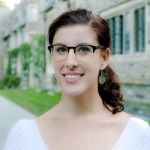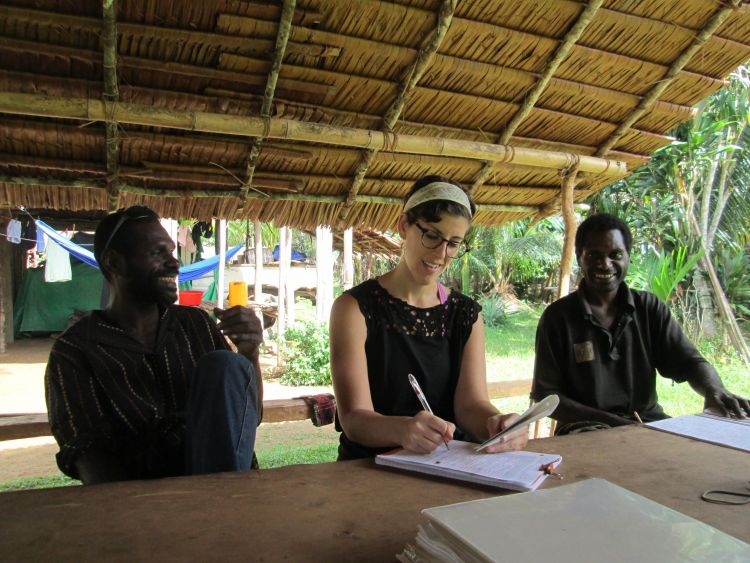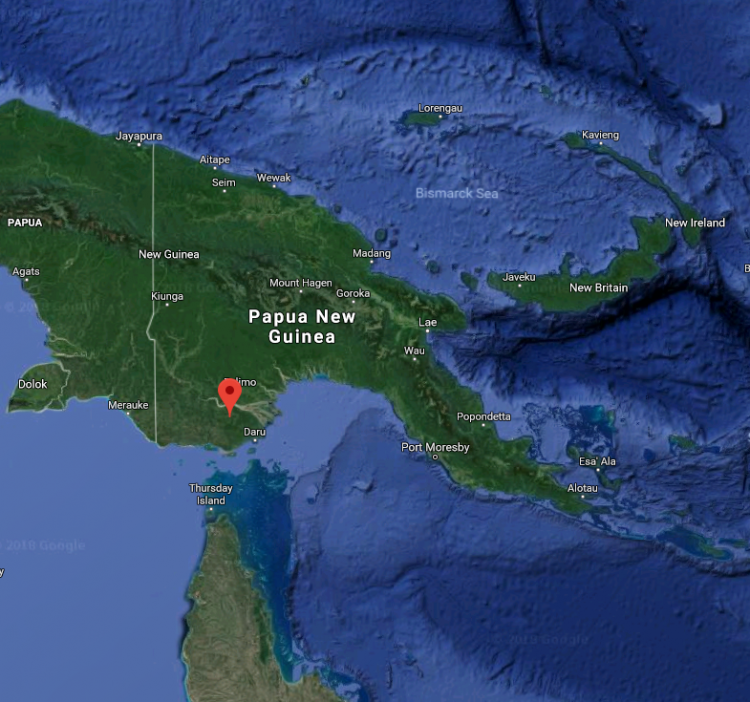Three years ago, linguistics PhD student Kate Lindsey was looking for new research projects when an advisor told her about a small tribe in Papua New Guinea that was seeking help preserving their language, called Ende. The tribe invited Lindsey to stay with them and create a dictionary and grammar, as well as translate various texts from English. Deciding that this field research could be developed for her dissertation, Lindsey set out a year ago for the tiny village, called Limol, 7,000 miles away.
Getting there wasn’t easy.
“They’re extremely isolated,” Lindsey said. “It’s a two-day boat ride and a hike. Or you can take a plane and fly it onto a grass airstrip a few villages away,” she said, adding that there are no roads into Limol, which also has no electricity, plumbing, hospitals or currency.
Lindsey lived with a village pastor and his family in a house made of tree bark. A vegan at home, Lindsey was sustained by a diet of foraged wildlife, including deer, pigs, wallabies, possums, bandicoots and lots of fish.
Previously influenced by Christian missionaries and once colonized by Australia, Papua New Guinea is now independent. Although English is the country’s official language, it’s only spoken by roughly 2 percent of citizens. Today, about 850 languages are spoken in Papua New Guinea – more than any other country – and they fall into two categories: Papuan or Austronesian.

“It’s important that understudied languages get introduced into the field of linguistics and that linguistic theory change to accommodate different languages.”
—Kate Lindsey
PhD Student in Linguistics
Ende (pronounced EN-day) is a Papuan language spoken by about 800 people living in Limol and a neighboring village. Although endangerment is often a concern for speakers of such indigenous languages, Lindsey said Ende is thriving among the small tribe, including its children. Still, English remains the primary language taught in Limol’s two schools, so the villagers enlisted Lindsey to create children’s schoolbooks in Ende. She was also tasked with creating a dictionary and grammar so that the Bible could eventually be translated to Ende.
As a phonologist, Lindsey studies the sound structures of language, and her primary interest is how sound patterns are used to share information. Her process for translating Ende was meticulous.
“One of the first things we did when I arrived was to write down words and count all the different sounds that occurred,” Lindsey said. “Once we had an inventory of the different sounds, we made an orthography and picked one letter for each sound.”
Lindsey said some of the sound patterns of Ende are similar to those of other languages, such as Turkish. But Ende also has sound patterns that have never been observed elsewhere. For example, Ende speakers use a nasal “N”-like sound that floats around in speech. They also have several verbs that end with an “N” sound, but many people don’t pronounce it. For example, the Ende word dan, which means “to be,” is often pronounced da.
“It’s kind of like in New York, where some people don’t pronounce the ‘R’ in car,” she said.
Go to the web site to view the video.
Lindsey said there are roughly 7,000 languages spoken worldwide, and that linguists have developed theories about how they work. But these theories, she said, are largely based on Indo-European and Uralic languages.
“It’s important that understudied languages get introduced into the field of linguistics and that linguistic theory change to accommodate different languages,” she said.
Lindsey’s dissertation comprises three chapters, each focused on a different sound pattern in Ende not found in other languages. Each chapter describes the pattern, and then outlines how linguistic theory must change in order to accommodate this new data.
In addition to translating Ende, Lindsey taught an eight-week technology class for villagers so they could learn to use cameras and computers and to type. The villagers were particularly enthusiastic about movies and had the idea of making one of their own. Lindsey chose to let the community direct, narrate and film the resulting movie themselves without her outside bias.
The documentary they produced tells the story of four Ende men and women who first ventured from Ende land to learn about the Bible, and then returned to Limol to teach it to the tribe. Lindsey said the goal of the film was to teach younger generations about what life was like before Christianity was introduced to the tribe, as well as introduce themselves to the outside world.
The 30-minute film, Light into Ende Tribe, will screen at Stanford Oct. 19.

Linguistics PhD student Kate Lindsey was enlisted to help the tribe document Ende and write children’s schoolbooks in the language. (Image credit: Kate Lindsey)

Lindsey meets with indigenous people in the village to document their language. (Image credit: Kate Lindsey)

Limol is a tiny village located in the rural, southern portion of Papua New Guinea. (Image credit: Google Maps)

Lindsey spent a year in Limol. She lived with a local pastor and his family in this home made of tree bark. (Image credit: Kate Lindsey)